Invented by Hassan Issa, Individual
One of the main drivers of the pill dispenser market is the aging population. As people get older, they tend to require more medication to manage chronic conditions and other health issues. However, many seniors struggle to keep track of their medication schedules, which can lead to missed doses and other complications. Pill dispensers offer a simple and effective solution to this problem, allowing seniors to stay on top of their medication and avoid potential health risks.
Another factor driving the market for pill dispensers is the increasing prevalence of chronic diseases such as diabetes, hypertension, and heart disease. These conditions often require individuals to take multiple medications throughout the day, which can be difficult to manage without a pill dispenser. By providing a convenient and reliable way to keep track of medication schedules, these devices can help individuals with chronic diseases to better manage their conditions and improve their overall health outcomes.
In addition to these demographic and health-related factors, technological advancements have also played a significant role in the growth of the pill dispenser market. Many modern pill dispensers come equipped with advanced features such as automatic pill dispensing, reminders, and alerts. Some even connect to mobile apps or other devices, allowing users to monitor their medication schedules remotely and receive notifications when it’s time to take their pills.
Overall, the market for pill dispensers is expected to continue growing in the coming years, driven by a combination of demographic, health-related, and technological factors. As more people seek out convenient and effective ways to manage their medication schedules, the demand for these devices is likely to remain strong. Whether you’re a senior looking to stay on top of your medication or someone with a chronic disease in need of a reliable pill dispenser, there are plenty of options available to suit your needs and preferences.
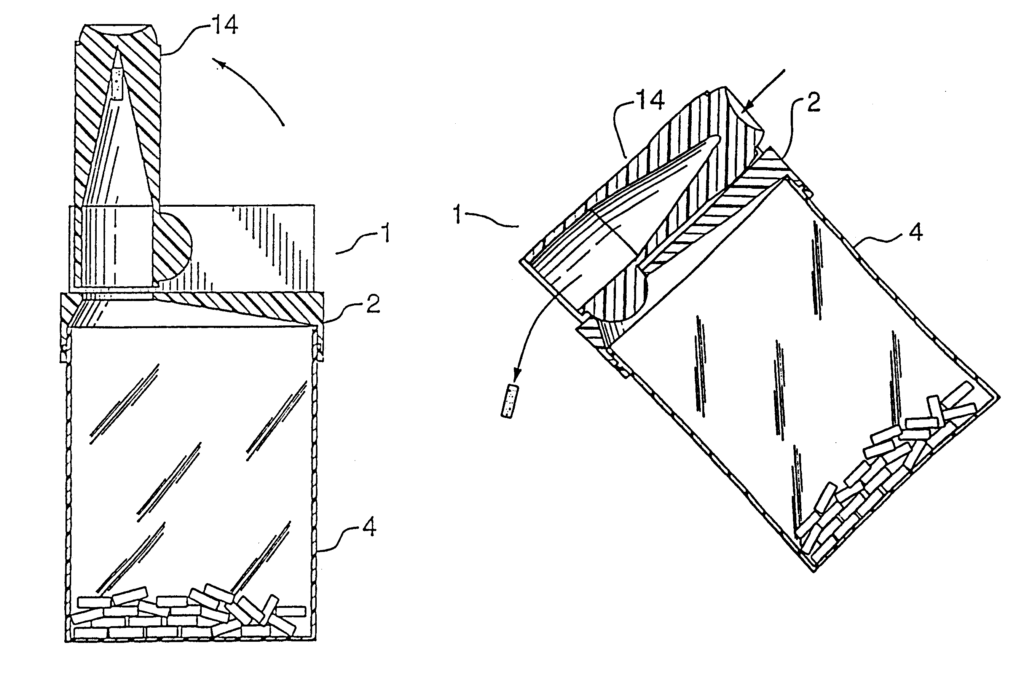
The Individual invention works as follows
A pill dispenser that dispenses a pill from a container with a lid. The cavity of the pill dispenser is shaped to create a conical surface. Advantageously, the cavity is conical in shape, which allows for pills to be inserted and dispensed from it, one at a time, regardless the size and shape of the pills. Optionally, the dispenser can be mounted within a cap, or closure member. These containers are common in most retail outlets. Optionally, the pill dispenser can be placed inside the container.
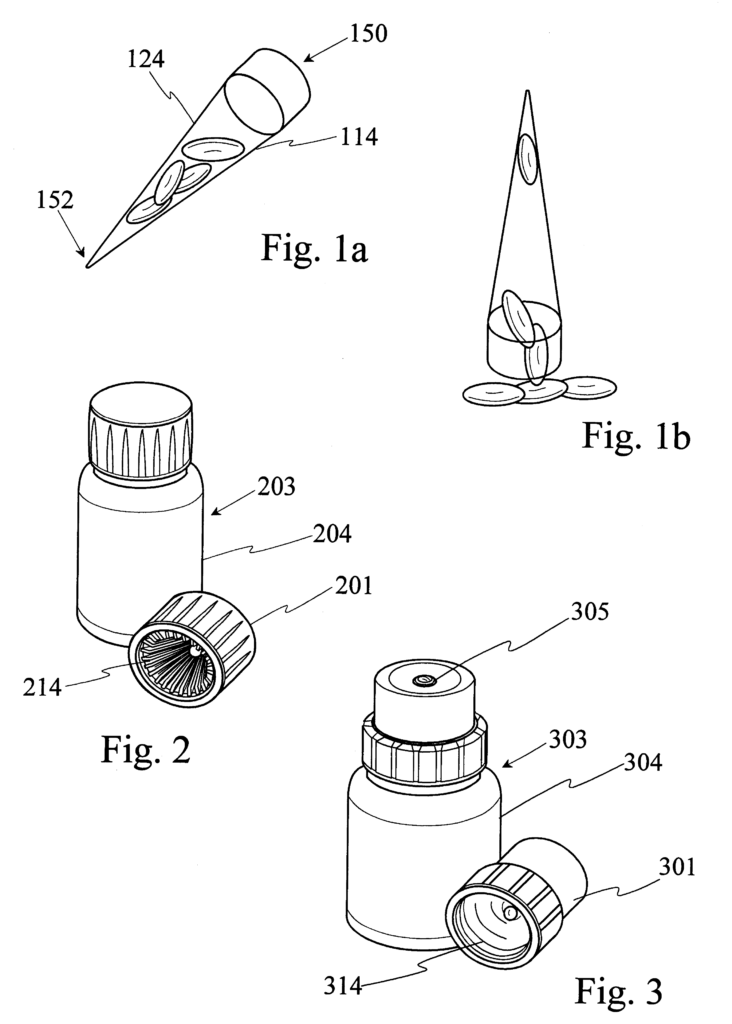
Background for Pill dispenser
1. “1.
The present invention is a dispenser for a supply of pills or tablets, pellets, capsules, and the like. The invention is a dispenser that allows the dispensing of one capsule, tablet, pellet, or pill at a given time.
2. “2.
All consumers know the difficulty involved in removing pills or tablets, pellets, capsules or similar from a container. The neck of most containers is too small for a person to reach into and take out a pill. The user can try to take out a pill by tipping it in such a way that a portion of the contents falls into his hand. The result is a higher number of pills being dispersed than desired. Therefore, when excess pills are returned to their container, they destroy the sterility. This process is time-consuming and awkward, especially if a pill is required immediately for medical reasons. There have been many attempts in the past to create a dispenser that can only dispense one pill at a given time.
For example, U.S. Pat. No. Snyder, 2,838,204 teaches how to make a single-piece pill dispenser. The dispensing section is a tube with a flat wall made of resilient material. It has a longitudinal slit that allows individual pills to be manually manipulated. Protects the pills from moisture and other contamination.
U.S. Pat. No. No. To dispense a pill, the user must rotate one of the pieces with respect to the other. This is done by making a series successive rotative movements. The container is upside down.
U.S. Pat. No. 3,991,908 to Thomas et al. This article teaches how to mount a pill dispensing cap assembly on the neck of a container. This cap assembly has a variety of components. It includes a rotor member that picks up the pill from the container and transfers it to a dispensing device. The cap design was intended for nitroglycerin tablets, but it can also be used with other similar-sized pills.
In U.S. Pat. No. 4,653,668 There is disclosed a container that can be used to store and dispose of small objects such as pills or capsules containing medication one at a. The container consists of a receptacle that contains a delivery mechanism, which includes a funnel-shaped port for capsules, and a tube or capsule delivery tube at the end. This funnel-shaped exit is designed to hold no more than one capsule or pill. The inner end of a receptacle can be pressed into the user’s hands or twisted to release resiliently mounted gate members. This opens the delivery tube and delivers a small object to him.
U.S. Pat. No. No. 4,887 738 describes an article dispenser that is especially useful in dispensing prescription drugs or over-the counter pills. It consists of three components, including a container member (a dispenser control member), a flexible member and a container member. The container member is used to provide a dispenser portion, through which articles are passed in a sequential array. One article reaches the exit aperture and the rest are held at the gate apertures by the control member and flexible member. The dispenser components are made from low-cost, molded plastic. When assembled, they provide an easy to use dispenser that does not require two hands.
U.S. Pat. Patent No. 5,791,515 discloses a one-at a time pill container and dispenser with a mechanism that allows the device to be used with existing containers. It is equipped with a child-proof lock. This device is equipped with a mechanism to ensure that only one pill is brought into its dispensing chamber. It works by partial rotation of the cap relative to the bottle body. The cap can then be reversed to allow gravity to bring the pill into the hand.
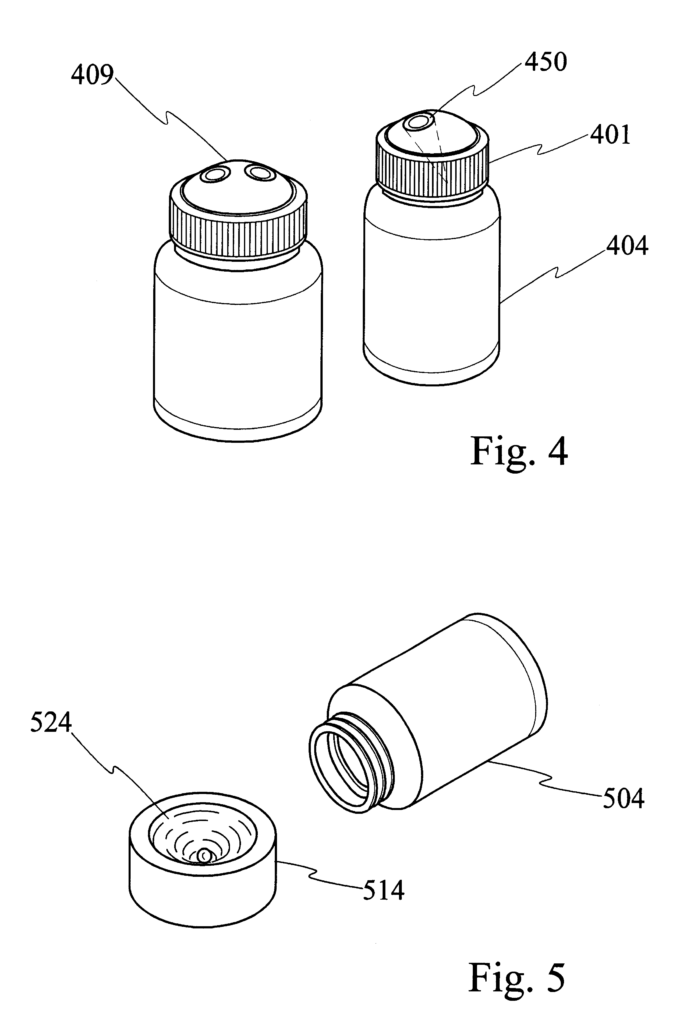
The prior art does not teach effective methods for dispensing pills one by one, but there are many inherent problems in the disclosed designs.
The limitation of the prior art is that there is a limited range of pill sizes and shapes for each dispenser. The specifications for pill dispensers are determined by the size and shape of the pills. It is obvious that each pill requires a unique dispenser, which increases manufacturing costs and reduces interest in single-at-a time pill dispensers. A one-at-a time pill dispenser is needed that can accommodate and work with different sizes and shapes of pills.
The downside is that these designs are too complex to mass-produce economically for commercial products, such as bottles containing prescription drugs and over-the-counter medications. There is a huge demand for low-cost, easy-to-make pill dispensers that are quick and simple to assemble. It is desirable to design a pill dispenser that has a small number of components in order to lower manufacturing and assembly costs.
Some pill dispensers have a disadvantage in that they require manual dexterity to operate the one at a time pill mechanism. While rotative manipulation is a common method of using a pill dispenser, other methods require a lot of manual manipulation. Some users have severe restrictions and require a pill dispenser with limited manual manipulation that doesn’t involve rotative motions. Many users also have difficulty understanding how pill dispensers work one-at-a time, which limits the use of prior art devices. It is therefore desirable to create a simple pill dispenser that dispenses one tablet at a given time and allows for manual manipulation and/or rotation.
Another disadvantage of the prior art is that it does not contain an inherently childproof mechanism. The childproof mechanisms used in pill dispensers make it difficult for people to obtain a pill quickly and easily. Many of these mechanisms can be burdensome for arthritic patients.
Furthermore,” the prior art pill container may need modifications in order to mount the dispensing unit. The pill dispensing assembly should be easily mountable on standard off-the-shelf pills containers, and/or those found at most pharmacies.
Also, described in the prior art are one-at a-time pill dispensers that only dispense one pill at a given time. It is possible to dispense more than one pill at once in many situations, even though one pill is usually dispensed at one time. Consider a common container of pain relief for use in a group setting. While most people only require one pill per day, some people may need more. This group is often frustrated when the ability to remove more than one pill at once is removed. The prior art also describes one-at-a time dispensers that are integrated into the container’s design. Individuals who don’t wish to use this one-at-a time delivery method are advised to opt out. The container will also be rendered inoperable if the mechanism for dispensing one tablet at a time becomes damaged. A one-at-a time pill dispenser should be able to operate in both a uni-mode or multi-mode. It can also be easily adaptable to commercial containers.
It is generally desirable to invent a pill dispensing device that is cheaper to make and/or assemble, easy to use, and requires a different type motion from the user to access the articles.
To overcome some of these drawbacks, it is the object of the invention that a one-at a time pill dispenser be made with a simple manufacturing process.
Another object is to allow the user to dispense one pill at a given time with no difficulty in hand movements.
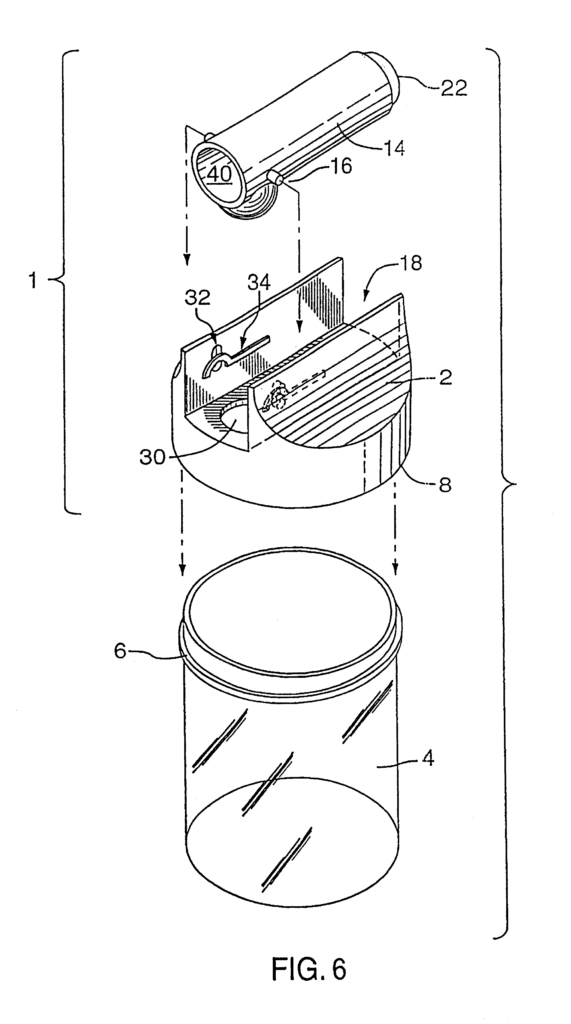
Another object is to provide a pill dispensing device that can be mounted on standard pill containers found at most pharmacies.
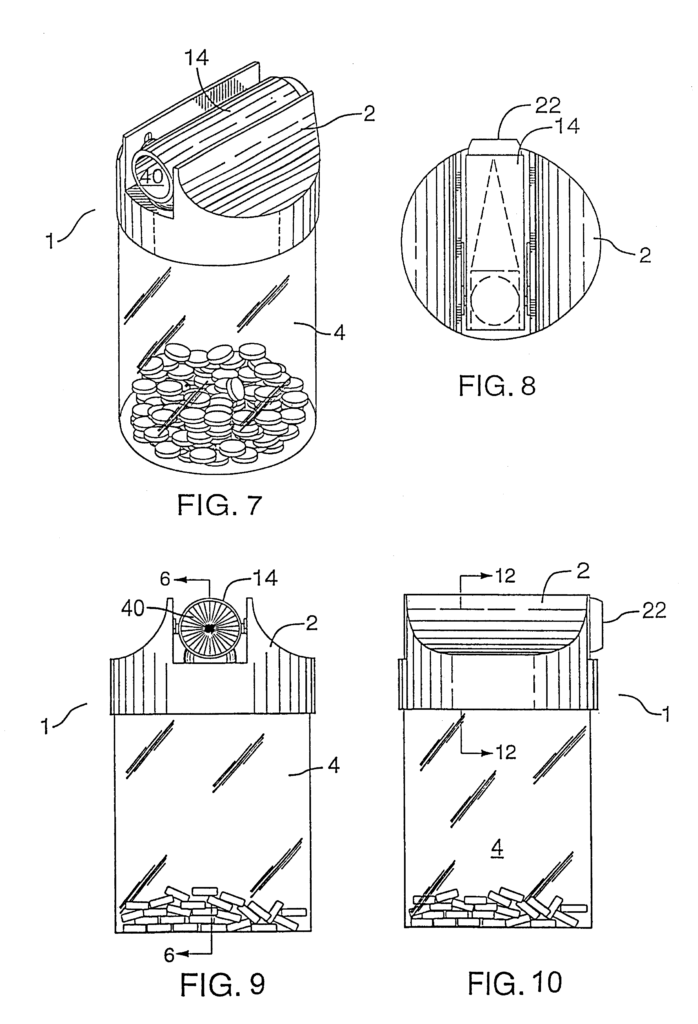
Click here to view the patent on Google Patents.
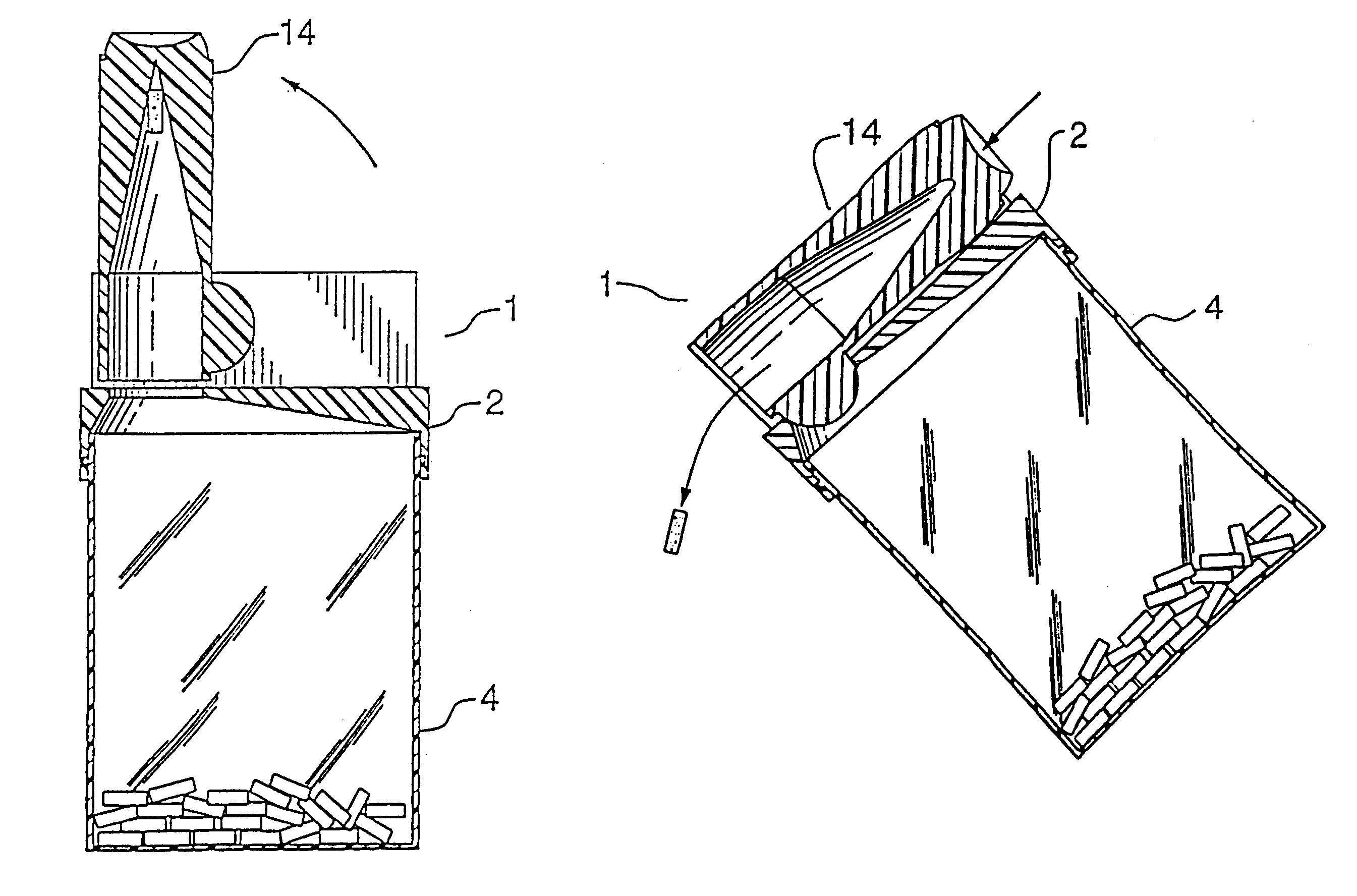
Leave a Reply